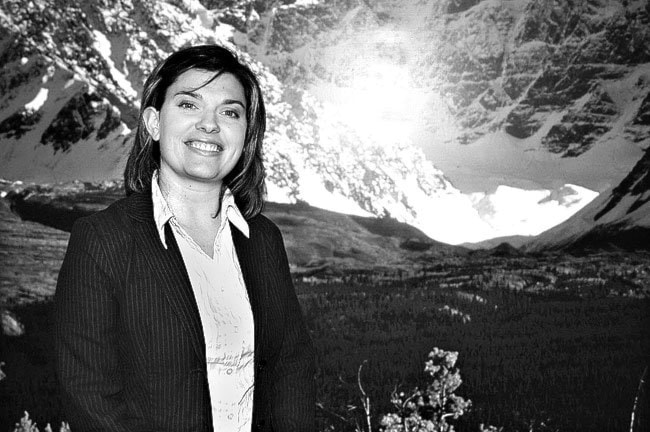Anna DeGraf was one of the few adventurous women who went north during the Klondike Gold Rush to provide an invaluable service - sewing.
At age 55, DeGraf crossed the Chilkoot Pass using a crutch because of a bum leg.
DeGraf, a widow, went north in 1892 in search of her 23-year-old son who had been prospecting in the Yukon.
“I took my sewing machine along for I felt I was going to an unknown land where women and their work would be scarce, and it might be necessary for me to earn my living by sewing.”
She headed to Circle, Alaska, where she made a name for herself in something other than sewing.
“Anna once protected a dance hall girl from a gang of six miners, wielding a gun to stand them off,” according to Lael Morgan’s book Good Time Girls of the Alaska-Yukon Gold Rush.
“The girl had angered the men by objecting when they began to ‘roughhouse” in her cabin ... And, although Anna was 56 at the time, the attractive seamstress barely escaped molestation herself.”
She was also able to earn a fair sum as a nurse.
“Before 1899, when women were particularly scarce in the Klondike, service sector work - those positions we have come to know as ‘pink collar’ occupations - brought considerable wages,” according to Charlene Porsild’s book Gamblers and Dreamers: Women, Men and Community in the Klondike.
DeGraf pulled in a staggering $300 in three weeks for taking care of a sick girl.
At the time, men were making just $40 working in the Alaskan mines, says Porsild.
After two years in Circle, DeGraf moved back to San Francisco, California to be closer to her daughter, until the Klondike stampede began a few years later.
“As before, her main purpose was to look for her son, but she also admitted that the north had cast a spell on her and she was feeling restless,” according to Frances Backhouse’s book Women in the Klondike.
DeGraf collected 1,360 kilograms of materials, including her sewing machine, cloth, buttons and lace and joined the stampede.
She arrived in Dawson in the spring of 1900, rented a cabin and moved in only to have the whole thing burn to the ground the following day.
Undaunted, DeGraf found a job at the Alaska Commercial Company where she worked during the days. In the evenings she took on commissions to make dance hall girl dresses.
“I would sit by the window and sew and sew, and friends going by would call to me, “Don’t you ever go to bed?” she wrote in her memoir Pioneering in the Klondike.
On Sundays, her day off, she would walk out to the creeks to see if her son was nearby. But she did not find him.
Despite her frustrations, DeGraf had friends and merry times in Dawson.
She had a close circle of friends, whom she met with each week to have tea and cakes and to discuss theosophy, according to Backhouse.
Over her years in the Yukon, DeGraf received two marriage proposals, both of which she turned down flat.
“‘I assured him I was too busy making a living to take unto myself a husband, and I made it so clear to him that ... the subject was never mentioned to me by him again,’” according to Backhouse.
DeGraf stayed in the Yukon until 1917, when her great-granddaughter was born in San Francisco.
She died in California at age 90 in 1930.
This column is provided by the MacBride Museum of Yukon History. Each week it will explore a different morsel of Yukon’s modern history. For more information, or to comment on anything in this column e-mail lchalykoff@macbridemuseum.com.
